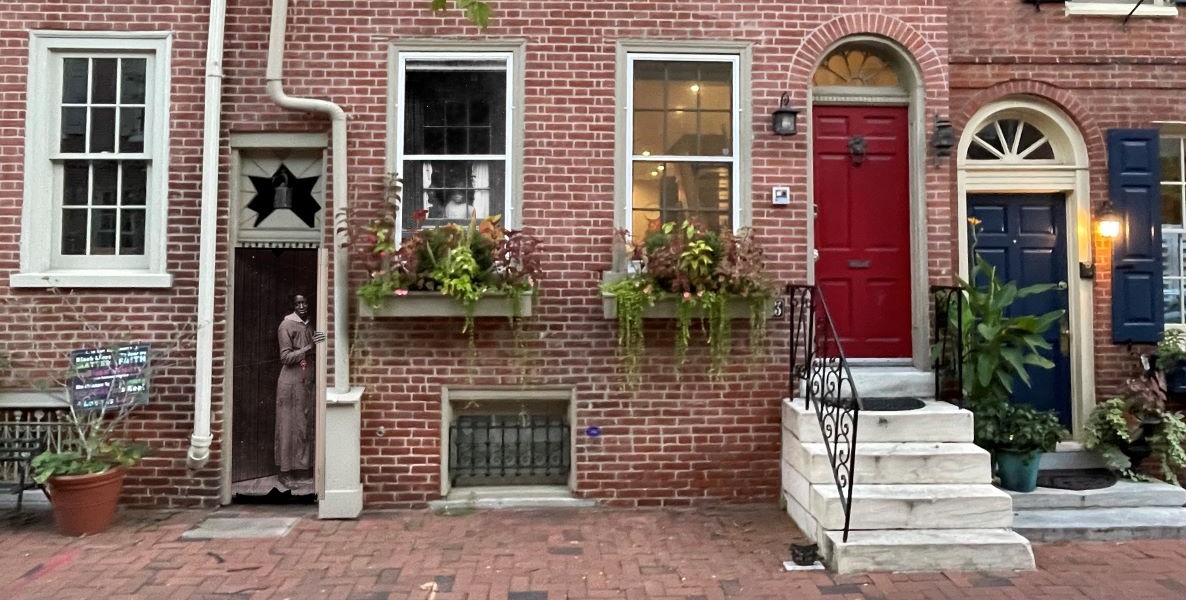Walk down Delancey Street between 5th and 6th, and you’ll see her — a woman, maybe five-foot-five, standing in the slender gateway of an alley. She leans slightly with her hand on the doorframe, her dark eyes staring evenly at you. Though she’s rendered in black-and-white, she nevertheless feels alive; it takes a second for your brain to process that she’s a photograph, and clearly one from another era — 1918, it turns out. Same goes for the small child next to her, staring plaintively out the white curtains of a window on a stately brick rowhome.
It’s surreal and oddly moving to see these people from the past living here, in this space, in 2023. And there’s more to see as you walk along Delancey, to South Street, then Bainbridge and Pine and Lombard — other black-and-white scenes and people captured from a Philadelphia that is at once both familiar and foreign. There, in the window of the Church of the Crucifixion, are two tiny Black boys walking, hands in pockets, on a run-down 1950s Philly street; there, in the arched entrances of Randall Street condos, a team photo of a Black baseball club in the early 1900s; there, looking out from Rex at the Royal, Nat “King” Cole at a piano in a crowd of smiling faces.
Called Reflecting Revenants, this series of life-sized and larger-than-life photos displayed on homes, churches and businesses from 5th to 18th Streets reflects the everyday lives of some of the Black Philadelphians who once lived here. It’s the work of two Philly-born-and-raised artists, Beth Naomi Lewis and Amelia Carter, who buried themselves in piles and piles of archives to find candid historic photos from a swath of Philly known as the 7th Ward. Then they turned the pictures into large reflective vinyl stickers, dotted them with unobtrusive QR codes that offer viewers a chance to read about each picture, and, with help from Mural Arts Philadelphia and permission of neighbors and businesses, wheat-pasted them across several blocks.
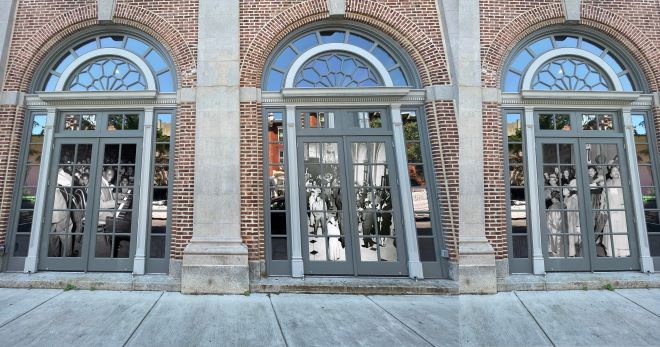
Temple University Libraries. Installation Site: Rex at The Royal, 1524 South Street
“The idea came out of the desire to return and make visible again that history to the streets of the 7th Ward,” Carter says. Upon seeing the photos that the city had kept to document its changing landscape, she says, she and Lewis realized that the pictures from the 7th also captured “many, many Black people who were literally inside shop windows, walking down the street shopping, coming out of their houses, sitting on their stoops. And so we wanted to return those figures back to that space that they originated from.”
In fact, Reflecting Revenants is just one piece of a broader public exhibition that aims to do exactly this, to bring the history of the area — the 7th Ward — to life for a fresh audience of Philadelphians. The wider project, Legacy Reclaimed: 7th Ward Tribute, is a sprawling, immersive collaboration between the prolific Little Giant Creative agency, Mural Arts Philadelphia and the city’s Department of Records, diving deep into the remarkable and relatively unsung history and culture of vibrant Black life in the middle of Philadelphia in the 19th and early 20th centuries.
“If you think about all of the firsts that exist between Sixth Street and the river, and there’s no sign of this rich Black history, what possibilities does that offer for any space?” — Tayyib Smith
The heart of Black Philadelphia
Now, in a city where Revolutionary-era history can sometimes crowd out the rest — and a city that today defines its geography almost exclusively in terms of neighborhoods — you’d be forgiven if you don’t know where or what exactly the 7th Ward of Philadelphia is. The aim of the Tribute, however, is to change that.
Once widely known as the beating heart of Black Philadelphia, the 7th Ward — basically the stretch from Society Hill to Rittenhouse, from Spruce to South — was the territory spotlighted by W.E.B. Du Bois in his seminal 1899 work, The Philadelphia Negro, about urban life in Black America.
People who know that book well tend to know that the 7th, which now includes some of Philly’s wealthiest and predominantly White neighborhoods, was once home to more than 15,000 Black Philadelphians who lived, worked and owned businesses there. In Du Bois’s time, it was, says Amy Hillier, an associate professor in Penn’s School of Social Policy & Practice, a “significant concentration” of Black residents for a city in the north.
Even beyond Du Bois and his work, the 7th Ward represents a wildly significant piece of Philly (and American) history. It’s the 7th that was — and is — home to Mother Bethel AME, which was not only a stop on the Underground Railroad, but is the oldest African Methodist Episcopal congregation in the nation, sitting upon the oldest property in the country continuously owned by African Americans. It was the 7th where Du Bois and Octavius Catto lived; the 7th where the Royal Theater brought in acts like Duke Ellington and Ella Fitzgerald in Jim Crow-era Philly; the 7th is where the Institute of Colored Youth formed before it evolved into Cheyney University, the first institute of higher education for African-American people in the country.
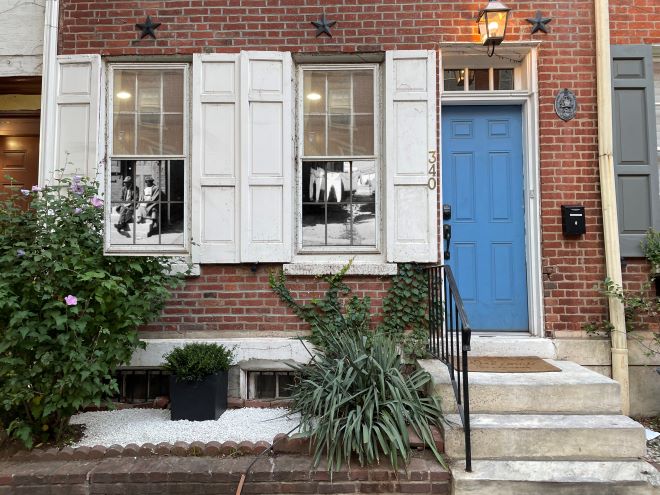
It was also the 7th that Tayyib Smith — co-founder of Little Giant Creative, serial entrepreneur, Philly renaissance man — would traverse on the regular some 100 years later, commuting between his own apartment in Fitler Square and Queen Village, where his girlfriend (now wife) lived. That was roughly 2017, he guesses, but even before that Smith had been reading all about the place and its history. He’s read about Catto, about Du Bois. He’d read Isabel Wilkerson, and Marcus Hunter, an academic who delved into the meaning of the 7th. He’d studied scrapbooks from William Dorsey, a wealthy Black social historian who’d lived in the 7th in the 1800s and early 1900s, and who collected memorabilia and newspaper clippings about lives of Black people in America.
And so it was with this history all rattling around in his head that he walked, passing the few historic placards that dotted his routes. It struck him, he says, how different this stretch of Philly had become in the passing years, and how for the most part “none of this was in my neighbors’ consciousness, or in school children’s consciousness, or in our tourism hospitality narrative.” A seed of an idea was planted.
It’s that seed that has now, years later, given rise to the remarkable 7th Ward Tribute exhibition, a project Smith expanded well beyond himself with an impressive, unexpected roster of players and layers of storytelling.
The city’s Department of Records, for example, contains a treasure trove of archives — some 300 years of documented city history, says Records Commissioner Jim Leonard. And they’ve been actively working in recent years to find ways to make their maps, photos and records — and the stories they tell — more accessible to more people. So the collaboration with Little Giant (their second collab, actually: the Department of Records also worked with Little Giant in 2018 when both entities were interested in telling a story about redlining in the city) was a great fit, he says. More than that, he adds: “I thought the concept was amazing.”
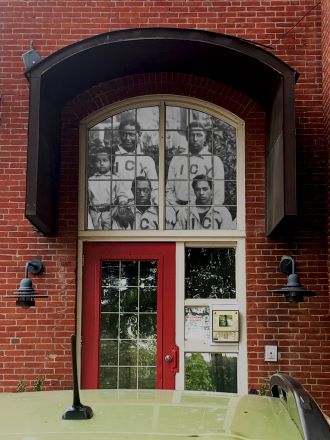
In addition to Reflecting Revenants, the Tribute will debut this month local artist Li Sumpter’s “Time Bandit of the 7th Ward” at Mother Bethel Church, a multi-artist collaboration and interactive “gaming installation” inspired by both the ward’s Black history and, as Sumpter puts it, “the new myths of the Afrofuture.”
Beyond the public art, there’s a history-focused walking tour led by Penn’s Hillier, a children’s curriculum developed by Mural Arts, and an audio supplement to the walking tour, developed with Sam Katz’s History Making Productions.
There’s also a series of public “salon events” planned to examine in greater detail the history of the 7th. This includes a look at the cultural shifts and political choices — think rezoning and redlining in the 1930s; the later fight over I-95 set to run right through South Street — that drastically shifted demographics and culture, to the extent that today only 7 percent of the 7th is Black and a great many of us have never known it to be anything different.
“This hindsight, this history can be used as a roadmap for better understanding of ourselves and the value we inherently have.” — Amelia Carter
The ghosts of Philly past
One lesson Smith will tell you he took from growing up with elders who told stories — and taken from the history books he’s voraciously consumed over the years — is an understanding that without “a continuum of lifting up and reclaiming this history, it will erode.” That’s true, he says, not just for Philly’s ever-changing streets, but for any cultural norm — from recipes to religion and beyond: “It can be lost in one generation.”
Therein lies the raison d’etre of the 7th Ward project as a whole: To tell the stories that need telling to a fresh audience of both young people and longtime locals; to bring back to life, at least a little, this past version of our city before it fades away, out of context and out of consciousness.
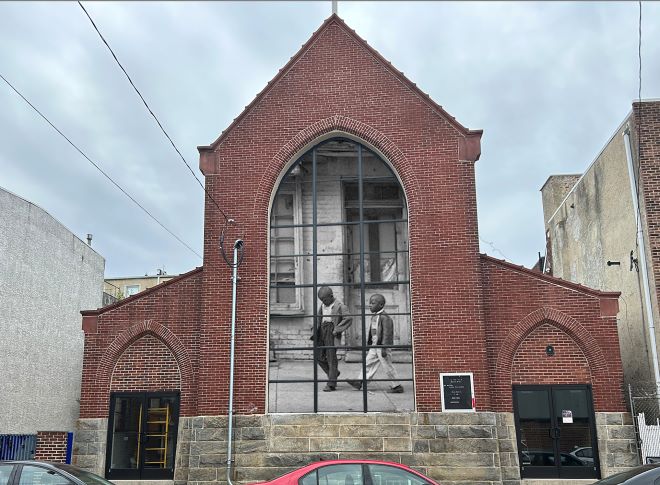
Donated by Frank and Ditta Hoeber. Installation Site: Church of The Crucifixion, 807 Bainbridge Street
And that matters, he says, not just as a tribute, but for the way people engage with the city now. “There’s all kinds of cliches about how if you don’t know where you’ve been, you won’t know where you’re going,” he says. But he sees real value in contemplating how we understand the role the past can play as we move forward in a city where change is always happening, “slowly, incrementally, constantly.” And as with his redlining project, he’s drawn to that sense of a connected past-present-future that he sees in the 7th Ward.
“If you think about all of the firsts that exist between Sixth Street and the river, and there’s no sign of this rich Black history, what possibilities does that offer for any space?” he wonders.
Consider, as Lewis points out, the photo in Reflecting Revenants that sits across the street from Mother Bethel. It’s labeled with the caption: Ms. Doris Way, of Society Hill. Previous to this project, Lewis says, the tag “of Society Hill” would evoke an affluent white woman. But Ms. Doris Way is Black. “And I really feel like that’s one of the important parts of this project. You have to look her up, see her name, and then you see ‘Of Society Hill.’ And that educates you about the fact that Society Hill wasn’t always what it is today.”
This is actually the hope of their installation, Carter says. “I want people to walk away with the understanding that Black history also happened in a space that doesn’t really reflect that it was once there. That it made an impact on the space. And it was valued, and it was beautiful. And in that sense, have a sense of place and ownership over parts of the city that perhaps Black people feel alienated from; a sense that we can rebuild that heyday kind of period if we so choose. And this hindsight, this history can be used as a roadmap for better understanding of ourselves and the value we inherently have.”
You can read more about Legacy Reclaimed: 7th Ward Tribute, which runs from now through February, here. The first salon, Black Futures: A Conversation About Art and Identity, is November 15, 6 to 8pm at Mother Bethel AME.
![]() MORE BLACK HISTORY FROM THE CITIZEN
MORE BLACK HISTORY FROM THE CITIZEN



